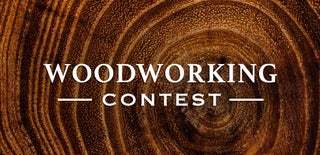Introduction: How to Laser Cut a Pinhole Camera
Learn how to create your own Pinhole Camera! Pinhole cameras were some of the first cameras ever invented by using a small hole to refract light onto light sensitive photo paper. Follow the steps below to create your own, one of a kind, camera!
You will need:
- Laser cutter
- Adobe Photoshop
- Wood
- Hot glue gun / Wood glue
- Electric tape
- Black felt
- Black paint
- Beer or soda can
- Pin or needle
- Light sensitive photo paper
- Dark room
- Flash light
- Scissors
Step 1: Step 1: Create Your Design
Download Adobe photoshop to create your design. Next, download a template (if applicable) for the laser cutter you are using. This will allow you to better see where on the wood you will be cutting.
Whether you want it to be simple or complex, photoshop will allow you to create your own design or even import images to print on your camera. When importing an image, anything that appears black will raster onto the wood. Anything that appears red, such as the outline of the box parts, will be cut through completely. You will be able to control these settings on the laser cutter. When you are finished with your design, set anything you want cut completely through as red and with a stroke of .001 pt.
In addition to your box pieces, you will need to design a piece to cover the pinhole and a frame for the photo paper to sit in inside the camera. You will also need to design a lid for the camera that is tightly snug that will allow you to take the photo paper in and out.
You have to be diligent in your design process to make sure that all of your pieces will fit correctly. A great website to help is: https://www.makercase.com/
Step 2: Step 2: Print Your Design
After you have finished your design, you will need to upload the photoshop file onto the computer connected to the laser cutter via flash drive or email. This will allow the laser cutter to read your design and cut accordingly. This is also when you will need to set your vector/raster settings on the laser cutter to determine how deep and intense you want your design to appear on the wood. It is important to remember the type of wood and how thick the wood is when creating your settings.
You will now place your wood or scrap wood into the laser cutter and print your designed pieces.
Step 3: Step 3: Paint, Edit, Assemble
Before painting your camera, make sure that all of the pieces fit well together without any light leaks. It is important that the inside of your pinhole camera is completely light proof to avoid blurred or overexposed images. A great precaution to take is to paint the entire inside black. This is done easiest with opaque spray paint that can be purchased from any craft store. You can paint before or after you assemble the camera, but I find it easiest to paint before. To assemble your camera, use wood glue or a hot glue gun.
After you have painted and assembled your pieces, take a flashlight into a dark room and place it in your camera. If you can see light leaks, this is a sign that you may need to take further precautions. A great way to cover up light leaks is with opaque electric tape or black felt. Super glue the felt or place the tape on the light leaks.
Step 4: Step 4: Add Pinhole
To create your pinhole, cut out a small square piece from the beer or soda can with your scissors. Then, use a small pin or needle to carefully create a small pinhole in the center of the square piece. Then, tape or glue the square piece into the inside of the hole in the camera. After this step your camera is now complete.
Step 5: Step 5: Test Out Camera
After you have completed your design and assembled your camera, go into a dark room and place the photo paper into the frame. You will need to calculate and test out exposure times with your camera to ensure the perfect turnout for your image. Take your camera outside and test out your camera. Be sure to time your exposure between the time you take the cap for your pinhole on and off.
Step 6: Step 6: Photo Time
After you have calculated your exposure time and have taken your photo, you will take your photo into a dark room and follow the proper steps for dark room photography. After you have washed your photo and let it dry, you should have a negative image of what your camera captured. Congrats! You have successfully created a pinhole camera!

Participated in the
Woodworking Contest







